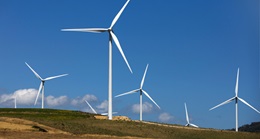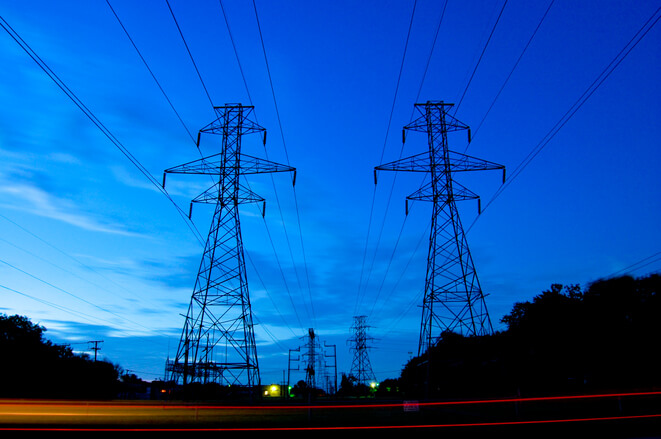
On Feb. 18, the Electric Reliability Council of Texas Inc. grid hit a record peak of wind with 14,023 MW serving the region shortly after 9 p.m.
By Matthew Bandyk, SNL
A flurry of construction of new wind power facilities led electric grid operators for Texas, the Great Plains and much of the Midwest to each report record-setting amounts of wind energy within several days of each other.
On Feb. 18, the Electric Reliability Council of Texas Inc. grid hit a record peak of wind with 14,023 MW serving the region shortly after 9 p.m. Later that night, ERCOT’s wind penetration rate reached an all-time high of 45.14%.Penetration is based on the amount of load being served by wind.
Then, on Feb. 19, the Midcontinent Independent System Operator Inc., which operates the grid in all or part of 15 states from Minnesota to Louisiana, was propelled to a wind peak of 13,084 MW, surpassing the previous peak from Jan. 28 of 12,720 MW.
That same day, the Southwest Power Pool Inc., serving states like Oklahoma, Kansas and Nebraska, reached a penetration record of 43.9%, according to spokesman Derek Wingfield. SPP had hit a wind peak record of 10,439 MW just two days before on Feb. 17.
Moreover, these records may not stand for long because February is not even the gustiest time of year. The capacity factors of wind farms tend to be the highest in April, according to data from the U.S. Energy Information Administration.
“These record wind outputs by grid operators across the country demonstrate that large amounts of wind energy can be reliably integrated into the grid,” American Wind Energy Association Senior Research Director Michael Goggin wrote in a Feb. 23 blog post.

That same day, the Southwest Power Pool Inc., serving states like Oklahoma, Kansas and Nebraska, reached a penetration record of 43.9%.
Rapid growth in wind installations over the last several years has made reaching new levels of peak wind output a frequent phenomenon for these regions, although they do not always set records at the same time. ERCOT set records for wind eight times in 2015, according to spokeswoman Robbie Searcy.
For MISO, all-time peak wind output was reached twice in 2015, according to spokesman Andy Schonert. SPP set its last wind penetration record of 43.3% just one day before the current record. In 2015, the grid operator set new records for penetration six times and new records for wind peak nine times, Wingfield said. The highest wind penetration rate that year was 38.3%.
Last year also saw double-digit percentage increases in the amount of wind capacity for ERCOT and SPP due to the construction of new wind farms, with more modest growth in MISO. ERCOT added 3,394 MW of wind that year, a nearly 21% increase as a percentage of its total wind operating capacity, while SPP brought on 2,373 MW, a 20.5% increase. MISO’s wind capacity grew by 1,283 MW, or 8.3%, according to S&P Global Market Intelligence data.
Nationwide, the 4,420 MW of wind installed in the fourth quarter of 2015 made it the biggest quarter for wind construction since the fourth quarter of 2012, a recent S&P Global Market Intelligence report found.
Earlier this year, AWEA said more wind projects were added to the grid during the final three months of 2015 than in all of 2014 as developers raced to qualify for a federal tax credit that was set to expire, although Congress ultimately extended it.
Meredith F Bearden contributed to this article.
Filed Under: News





About a year ago I came to the conclusion that the end of dirty fossil fuels may be only a decade away.
Since then almost daily I see news that 2025 is realistic goal for lights out on dirty and disease causing fossil fuels.